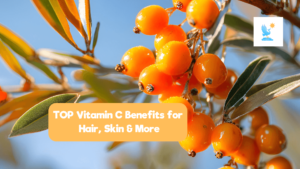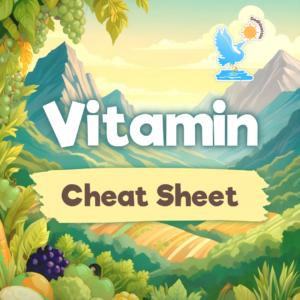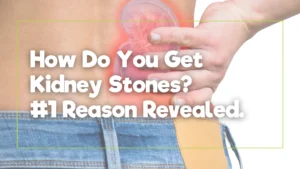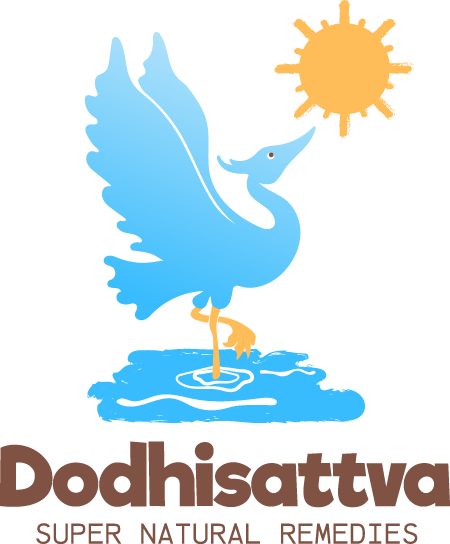Clean Clothes, Hidden Dangers: Is Laundry Detergent Toxic?
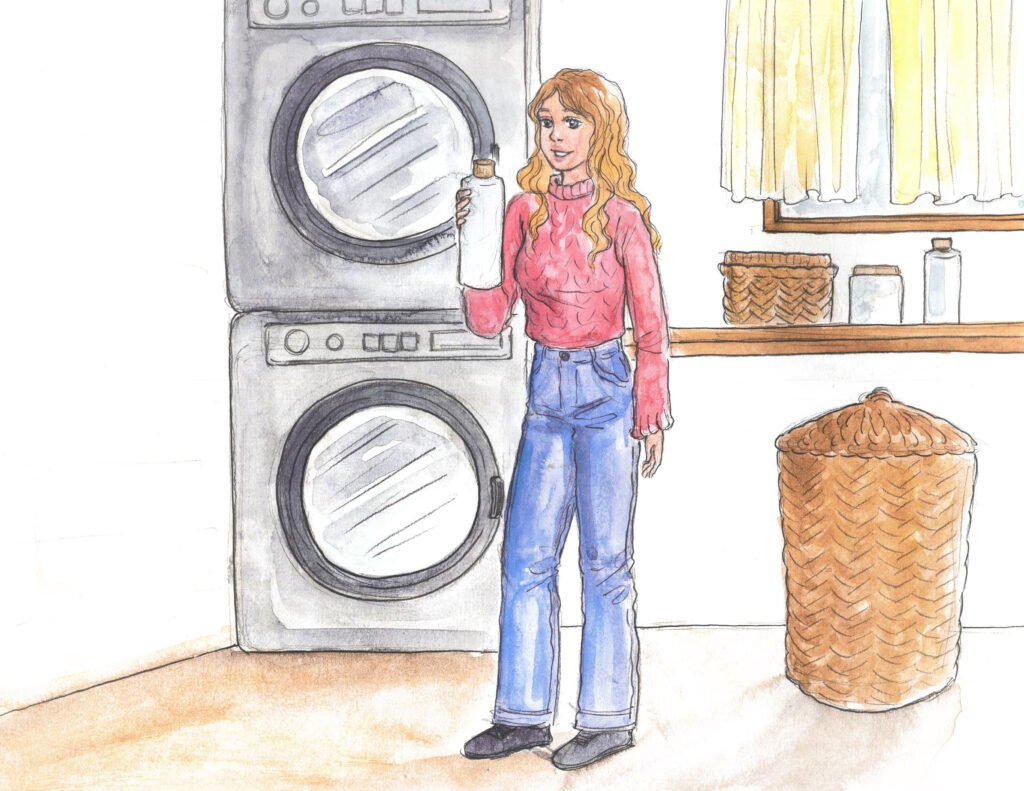
Table of Contents
What if that clean smell in your laundry is a major cause for concern? Is laundry detergent toxic?
In this article, we will dive deep into the dangers of commercial detergent and even those that claim to be eco-friendly.
Clean living is not just about what you eat and drink; it’s also about the products you use in your home, especially chemical-free laundry detergent.
Your laundry detergent, in particular, can have a significant impact on your health and the environment, and this is why we must ask ourselves, “is laundry detergent toxic?“
Many laundry detergents, even ones that are touted as being eco-friendly contain harsh chemicals that can irritate the skin, and respiratory system, and even disrupt hormones.
What’s more, is that they are highly toxic to our environment as well.
The synthetic fragrances wreak havoc on humans and the earth.
These chemicals can also linger on your clothes and be absorbed into your skin, potentially leading to long-term health problems.
Switching to a non toxic laundry detergent is a simple and effective way to reduce your exposure to harmful chemicals and protect your health and the environment.
NY Band Detergents
1,4-dioxane is just one of the dangerous components in many detergents on the market.
A study was recently done by the nonprofit group, Ingredients Matter.
They found that 1,4-dioxane was present in 65 out of 80 laundry detergents tested.
That number is significant.
The levels of 1,4-dioxane ranged from 0.11 parts per million (ppm) to 3.32 ppm.
The study also found that 1,4-dioxane was present in both conventional and plant-based laundry detergents.
This means that this toxic component of 1,4-dioxane is not just in your conventional detergents, but also in your brands soliciting as plant-based or eco-friendly.
Health Effects of 1,4-Dioxane
1,4-dioxane is a probable human carcinogen, according to the Environmental Protection Agency (EPA).
Exposure to 1,4-dioxane can occur through
- Inhalation
- Ingestion
- Skin contact
Short-term exposure to high levels of 1,4-dioxane can cause eye, nose, and throat irritation, as well as headaches, dizziness, and nausea.
Long-term exposure to 1,4-dioxane has been linked to an increased risk of
- liver damage
- kidney damage
- cancer.
Here is a list of some of the banned detergents in New York due to their 1,4-dioxane content:
1. Gain Original + Aroma Boost Laundry Detergent
This detergent was found to contain 3.32 ppm of 1,4-dioxane. It is a liquid laundry detergent that is marketed as having a “long-lasting aroma” and being “effective on tough stains.”
2. Tide Original Laundry Detergent
This detergent was found to contain 2.4 ppm of 1,4-dioxane. It is a liquid laundry detergent that is marketed as being “powerful on stains” and “gentle on clothes.”
3. Arm & Hammer Clean Burst Laundry Detergent
This detergent was found to contain 2.1 ppm of 1,4-dioxane. It is a liquid laundry detergent that is marketed as being “tough on odors” and “odor-neutralizing.”
4. Arm & Hammer Sensitive Skin Free & Clear Laundry Detergent
This detergent was found to contain 2.0 ppm of 1,4-dioxane. It is a liquid laundry detergent that is marketed as being “gentle on sensitive skin” and “free of dyes and perfumes.”
5. Dreft Stage 1: Newborn Laundry Detergent
This detergent was found to contain 2.3 ppm of 1,4-dioxane. It is a liquid laundry detergent that is marketed as being “specially formulated for baby’s delicate skin” and “free of harsh chemicals.”
6. Snuggle SuperCare Liquid Fabric Softener
This fabric softener was found to contain 2.3 ppm of 1,4-dioxane. It is a liquid fabric softener that is marketed as being “ultra-soft” and “long-lasting.”
7. Downy UltraPlus April Fresh Liquid Fabric Softener
This fabric softener was found to contain 2.5 ppm of 1,4-dioxane. It is a liquid fabric softener that is marketed as being “fresh” and “long-lasting.”
8. Bounce Dryer Sheets Outdoor Fresh
These dryer sheets were found to contain 2.2 ppm of 1,4-dioxane. They are dryer sheets that are marketed as being “fresh” and “static-fighting.”
9. Unstoppables Fresh Linen In-Wash Scent Booster
This in-wash scent booster was found to contain 2.6 ppm of 1,4-dioxane. It is an in-wash scent booster that is marketed as being “long-lasting” and “fresh.”
10. Seventh Generation Free & Clear Dish Soap
This dish soap was found to contain 2.1 ppm of 1,4-dioxane. It is a dish soap that is marketed as being “free of dyes and perfumes” and “gentle on hands.”
Laundry Detergent Toxicity Chart

Is Laundry Detergent Toxic?
It can be challenging for one to navigate the sea of detergents out there and answer the question, “is laundry detergent toxic? “
Here’s why….many ingredients are not shown on the bottle or with deceptive marketing the packaging looks like an eco-conscious clean ingredient brand.
Take for example Seventh Generation soap brand.
They too were a part of the NY banned detergent list for the product containing 1, 4 dioxane.
From what I understand they are taking actions to remove it.
But what I mean here is most of us looked at that brand as eco-conscious from the packaging.
Takeaways when asking Is Laundry Detergent Toxic?
- Packaging can be deceptive with pictures of the earth or some other organic-looking label.
- Many detergent bottles do not list all the ingredients
- Detergent companies are not required by law to list all the ingredients.
- Misleading labels with buzz words like “kind to the skin” or “safe in all temperatures”. These words mean nothing. There is no certification or regulation called kind to the skin.
To me that is absurd. We should have a right to know all of the things that are going into our bodies.
Many of these companies use the excuse of proprietary blends so that others won’t copy their formula.
Again to me, this is absurd if we are paying for something we have a right to know what is in the product.
Thankfully you and I likely have a honed intuitive sense and can spot this kind of chemical soup a mile away.
Our skin is the largest organ of our body and will absorb through the clothing what you put on it day in and day out.
Let’s explore some of the ingredients in commercial detergent brands so you can decide for yourself, “Is laundry detergent toxic?”
Fragrances: Synthetic fragrances are indeed toxic.
They do not have to list the chemicals that make up that fragrance on the bottle.
There is no legislation in the United States as of yet that makes this a law. I hope together you and I can change that.
I created that chart above so that you can share it in public laundry centers and over the Internet.
Personal Story Toxic Laundry Detergent
Not too long ago I was hiking through one of the most pristine and beautiful areas of our country, the Red Wood National Forest.
Enjoying the pure air quality and some of the wisest oldest beings in nature (the redwood trees) I was startled by a terrible smell.
Sadly it was the toxic detergent from other fellow hikers in the way of their chemical-laden detergent.
It took over the entire trail for hundreds of yards.
Unbeknownst to them so it seemed or perhaps they have gotten used to that toxic smell?
The chemicals in these fragrances are dangerous to humans and they are easy to detect when you are used to using natural essential oils from nature.
You can see here in this study how they negatively impact our delicate endocrine system.
It happens often and I hope that this article will help people to make better choices for themselves, other humans, animals, and the planet at large.
Why on earth would we need to put all of these harmful toxins in laundry detergents and not be required to share them with the buyer?
People are exposed to these toxins 24/7.
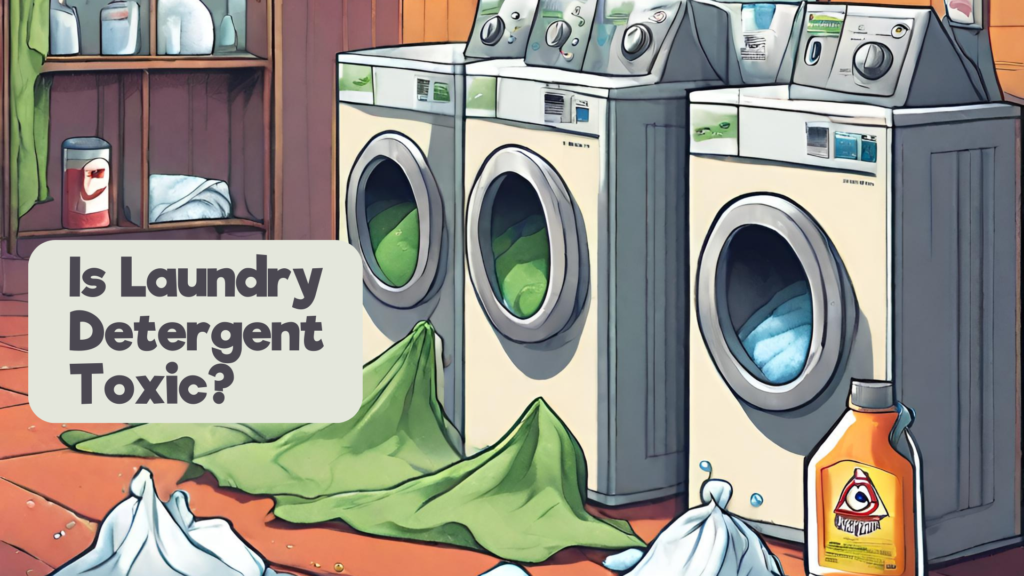
Is laundry detergent toxic? | Common Detergent Ingredients
Here is a comprehensive list to explore:
Sodium Lauryl Sulfate (SLS): SLS is a common surfactant found in many laundry detergents. It is an effective cleaning agent, but it can also be irritating to the skin, eyes, and respiratory system.
SLS can also dry out the skin and make it more susceptible to irritation.Sodium Laureth Sulfate (SLES): SLES is a derivative of SLS and is also a common surfactant found in laundry detergents.
It is less irritating to the skin than SLS, but it can still cause dryness and irritation. SLES can also be harmful to aquatic life.Formaldehyde: Formaldehyde is a preservative found in some laundry detergents and may be present but not listed on the label.
It is a known human carcinogen and here in this study may contribute to cancer.
It can irritate the lungs and skin.
The study also shows those exposed to formaldehyde repetitively for example in a work environment have an increased chance of leukemia and brain cancer.
Phosphates: Phosphates are water softeners that are found in some laundry detergents.
The EWG shares that phosphates contribute to an increased risk of kidney damage and cardiovascular disease.
Environmental Pollution
They can cause eutrophication, which is an algal bloom that can deplete oxygen in waterways and harm aquatic life.
Phosphates can also contribute to water pollution.
1,4-Dioxane: 1,4-Dioxane is a byproduct of the manufacturing of some laundry detergents.
It is a probable human carcinogen and can also cause liver damage, kidney damage, and respiratory problems. It may cause cancer.
Fragrances: Synthetic fragrances and chemicals are detrimental to human health.
These fragrances in commercial detergent are endocrine disruptors and wreak havoc on the body’s metabolism.
Fragrances can be irritating to the skin and respiratory system, and most contain harmful chemicals such as phthalates.
Optical brighteners: Optical brighteners have been shown to cause mutations in bacteria.
They coat your clothing and stay on them well after washing.
Optical brighteners do not biodegrade.
These chemicals are not allowed in many green-certified cleaning products. It is best to avoid these toxins.
Solvents: Solvents are used in laundry detergents to dissolve other ingredients, such as fragrances and dyes.
Solvents can be irritating to the skin and respiratory system, and can harm aquatic life forms.
Preservatives: Preservatives like formaldehyde are extremely toxic and don’t require disclosure on the label. It can simply say, “preservative” instead. Formaldehyde is also extremely cheap.
Dyes: Dyes are added to laundry detergents to make them more appealing to consumers. They are probable carcinogens and endocrine disruptors.
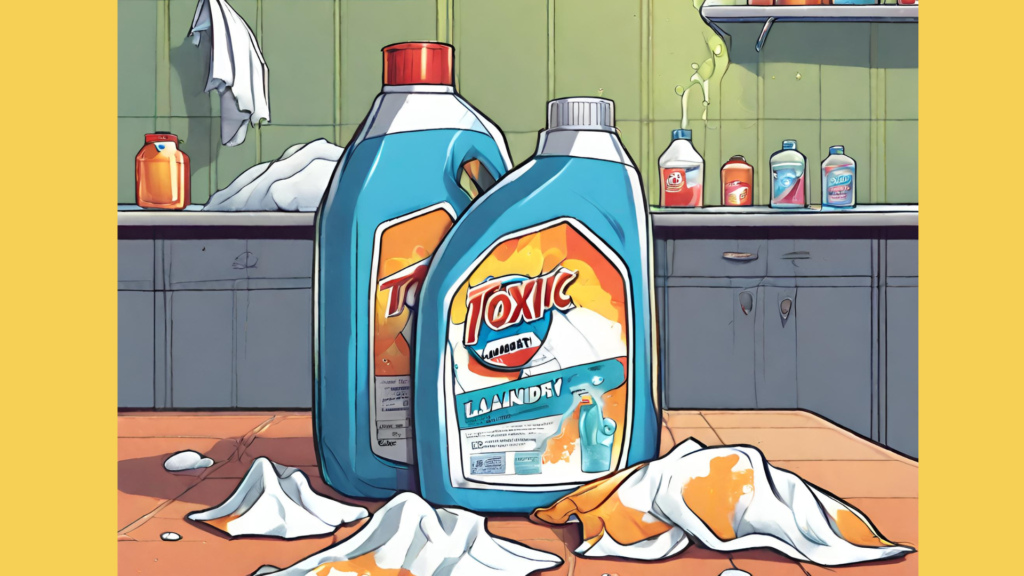
Is Laundry Detergent Toxic? Q/A
Many commercial laundry detergents and even so-called conscious brands like Seventh Generation use chemicals in their ingredients.
What's more is that they are not required by law to list all the ingredients so you are gambling with your health when you use these products.
This begs the question, Is Laundry Detergent Toxic? The answer is most are.
- Look for full transparency on labels
- Look for brands that have simple ingredients
- Avoid Fragrances as these are loaded with toxic chemicals from synthetic sources
- Opt for addingPure Essential oils to your laundry
The US product safety commission deemed Tide laundry detergent as toxic.
And yes indeed it is. It contains a highly toxic cocktail of chemicals.
Breathing in the fumes while it dries is an irritant to the lungs as these residues linger on the clothing for weeks at a time.
The synthetic fragrances and solvents are just some of the toxic agents in the product that I would never use to wash my clothing.
The safest laundry detergent is quite literally a simple pure Castille soap and your own chosen pure essential oils.
You could also use vinegar, baking soda and essential oils.
Essential oils that are germ and mold fighting like sage, pine, cedar, and tea tree are great choices for the laundry.
Consider
Many laundry detergents beg the question is laundry detergent toxic? This is because they have chemicals known to be potential human carcinogens.
A human carcinogen is a substance or agent that is known to cause cancer in humans.
Exposure to the substance can lead to an increased risk of cancer.
It is not banned in Europe but some of the ingredients in Tide detergent are not permitted in certain European countries like dioxane which is a potential human carcinogen. Carcinogens cause cancer.
Tide is extremely toxic in my humble opinion laden with synthetic chemicals and highly noxious fragrances that in my opinion are extremely dangerous to suscept oneself to.
Breathing in the fumes is even irritating to the lungs. I can smell it on people on the streets walking or on hiking trails. These chemical residues are a major concern to humans, animals and our environment.
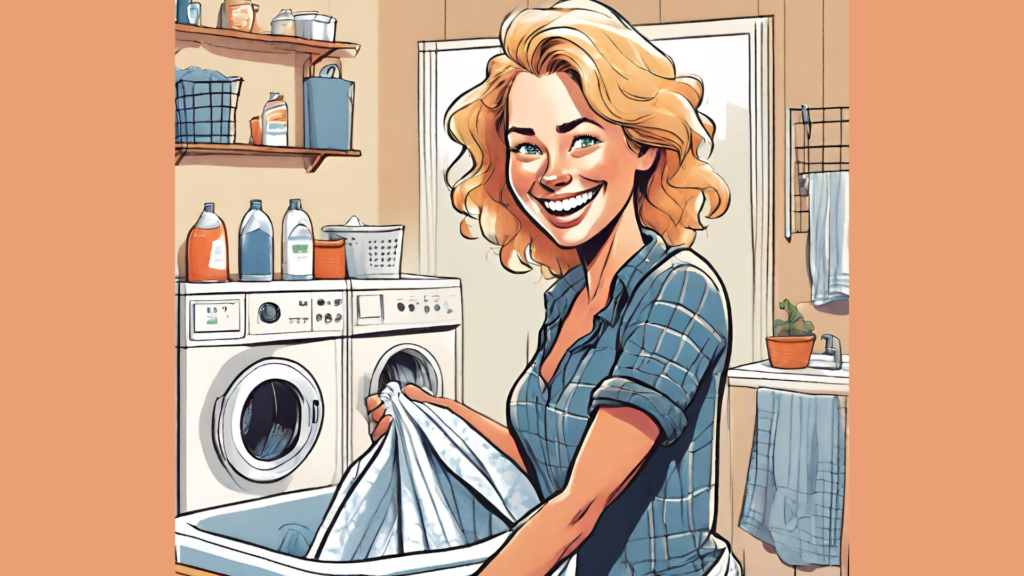
Non Toxic Laundry Detergent
Benefits of using non toxic laundry detergent:
- Safeguarding your health and family: The most important benefit is you are protecting your long-term health by avoiding these toxic detergents and choosing a non toxic laundry detergent that won’t harm your body.
- Gentler on skin and fabrics: Non toxic laundry detergents are often made with plant-based ingredients that are gentler on skin and fabrics than harsh chemicals.
This is important so you avoid health problems. - Better for the environment: Non toxic laundry detergents are biodegradable, meaning they break down quickly and easily in the environment.
This helps to reduce pollution and protect aquatic life. Your children will have a healthier planet to grow in. - More sustainable: Non toxic laundry detergents are often packaged in recyclable or biodegradable materials. This helps to reduce plastic waste.
- More effective: Some studies have shown that non toxic laundry detergents are just as effective as traditional detergents at removing dirt and stains.
Here are some specific benefits of using non toxic laundry detergent such as Pure Castile Soap, Ingredients Matter Detergent, and Molly’s Suds:
- Pure castile soap: Pure castile soap is made from vegetable oils, such as olive oil or coconut oil.
It is a gentle and effective cleanser that is also biodegradable. - Ingredients Matter: Ingredients Matter laundry detergent is made with plant-based ingredients, including saponins, which are naturally occurring surfactants.
It is also free of harsh chemicals, such as phosphates, dyes, and fragrances. - Molly’s Suds: Molly’s Suds laundry detergent is made with plant-based ingredients and essential oils.
It is free of harsh chemicals, such as phosphates, dyes, and fragrances.
How To Choose Non Toxic Laundry Detergent
To choose a non toxic laundry detergent read the label very carefully.
- Plant-based surfactants: These are the main cleaning agents in laundry detergent and help to remove dirt and stains.
Some common plant-based surfactants include saponins, coconut oil, and castile soap.
- Enzymes: Enzymes help to break down stains and dirt.
- Phosphates: Phosphates are harsh chemicals that can contribute to ill health.
hey contribute to eutrophication, a process that can lead to algae blooms and dead zones in waterways.
Look for a detergent that is phosphate-free.
- Fragrances: Avoid synthetic fragrances as they contain harmful chemicals, such as phthalates & allergens.
Choose a detergent that is fragrance-free & sub with essential oils.
- Dyes: Dyes can be irritating to skin and fabrics. Choose a dye-free detergent.
DIY Non-Toxic Laundry Detergent Recipe
This easy-to-follow recipe will make a large batch of non toxic laundry detergent that is just as effective as commercial brands but without the harsh chemicals.
All you need are a few simple ingredients that you can find at most grocery stores.
Ingredients:
- 3 cups Sodium Carbonate
- 3 cups Baking Soda or Bicarbonate
- 3 cups Borax
- 2 bars Dr. Bronner’s Unscented Castile Soap, grated
- 30-50 drops essential oil of your choice (optional)
Instructions:
- In a large bowl or container, combine the sodium carbonate, baking soda, and borax.
- Grate the castile soap into the bowl and mix well.
- Add 30-50 drops of essential oil to detergent such as pine, sage, or tea tree.
- Stir until all ingredients are well combined.
- Store the detergent in an airtight container in a cool, dry place.
To use:
Add 1/4 to 1/2 cup of detergent to your washing machine for a regular load of laundry. You may need to use more detergent for heavily soiled clothes or hard water.
Tips:
- If you are using a front-loading washing machine, you may want to dissolve the detergent in water before adding it to the machine.
- You can add a few tablespoons of vinegar to the fabric softener compartment of your washing machine to soften your clothes and help remove any residue from the detergent.
Enjoy your clean, non toxic laundry!
Tips for Non Toxic Dryer Sheets
One of the very best ways to avoid the toxic dryer sheets out there laden with chemicals is to simply use wool dryer balls and pure essential oils.
Wool dryer balls are reusable balls made of wool that are placed in the dryer with clothes to soften them and reduce static cling.
They are non toxic because they are made of natural materials and do not contain any harsh chemicals.
Dryer sheets, on the other hand, are typically made with synthetic materials and contain several chemicals, including
- Fragrances,
- Softeners,
- Antistatic agents.
Some of these chemicals can be harmful to human health and the environment.
Wool dryer balls work by tumbling around in the dryer and releasing lanolin, a natural oil found in wool.
Lanolin helps to soften clothes and reduce static cling.
Wool dryer balls also help to fluff up towels and bedding.
Here are some of the benefits of using wool dryer balls over dryer sheets:
- Non-toxic: Wool dryer balls do not contain any harsh chemicals, so they are safe for people with sensitive skin and allergies.
- Eco-friendly: Wool dryer balls are reusable, so they help to reduce waste.
- Effective: Wool dryer balls are just as effective as dryer sheets at softening clothes and reducing static cling.
- Affordable: Wool dryer balls are more affordable than dryer sheets in the long run.
If you are looking for a safe and effective alternative to dryer sheets, wool dryer balls are a great option. They are non-toxic, eco-friendly, and effective.
Here are some wool dryer balls to check out on Amazon.
Is Laundry Detergent Toxic? | Recap
Key takeaways from our article, Is laundry detergent toxic? :
- Many laundry detergents contain harmful chemicals, such as dioxanes, synthetic fragrances, phosphates, and toxins.
- These chemicals can be harmful to human health and the environment.
- It is important to read the label of your laundry detergent carefully but be aware that manufacturers are not required to disclose all of the ingredients.
- To be safe, choose non toxic laundry detergent brands, such as pure castile soap and essential oils, Molly’s Suds, Sal Suds, and Ingredients Matter.
- Avoid toxic dryer sheets and use wool dryer balls with essential oils instead.
The importance of being mindful of the chemicals in our laundry products is crucial to you and your family’s health.
It is also key to having a healthy planet for future generations and choosing safer alternatives is a must.
Let me know in the comments below what non toxic laundry detergent you prefer and what you think…is laundry detergent toxic?
Below is a link to the health course offerings here at Dodhisattva so that you can live your life with optimal health.





